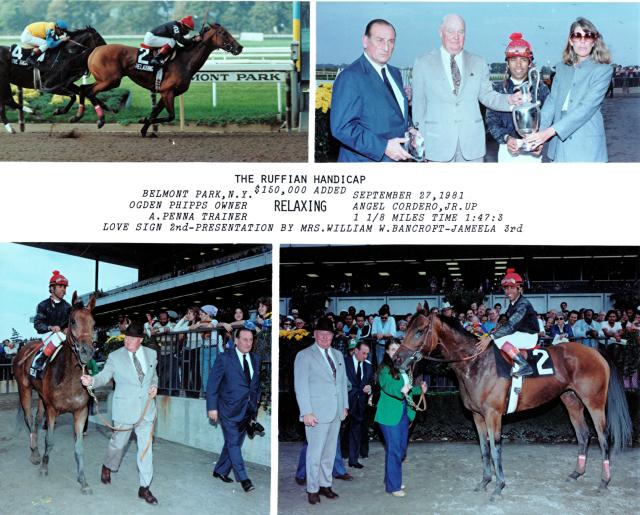Garden State Park
Vintage postcard of Garden State Race Track
Opened in 1942, Garden State Park once hosted the greatest of the great, including three Triple Crown winners. During the first racing season, future Triple Crown winner Whirlaway won the Trenton Handicap. In 1948, Triple Crown winner Citation picked up the Jersey Derby on his way from the Kentucky Derby to the Preakness Stakes. Secretariat, the 1973 Triple Crown winner, captured the Garden State Stakes as a two-year-old in 1972.
Secretariat's win photo from the Garden State Stakes
Another great to race at Garden State was Bold Ruler, who won twice at the track in 1957, including a win over Gallant Man and Round Table in the Trenton Handicap. Kelso and Riva Ridge also graced the Jersey track, which attracted up to 30,000 fans in its heyday with a 25 day meet in the spring and another 25 day meet in the fall. Weekday crowds averaged 12,000 with weekend crowds twice that. And then it all came to an end.
The horse and jockey on the top of the grandstand engulfed in flames
On April 14, 1977, a fire broke out in the old wooden grandstand while 10,000 fans were in attendance. In just 10 minutes, the flames raced from one end of the stands to the other, and in 2 hours the entire building was completely destroyed. Remarkably, there were only 2 deaths reported in what could have been an even worse tragedy. The grand old Garden State Park was gone, but there was one more chapter in the story.
History going up in smoke
At a cost of $178 million, owner Robert Brennan replaced the wooden stands with a veritable racing "palace". Marble floors, a covered paddock with a glass roof, and a club house resembling a Vegas casino welcomed fans when the track reopened in 1985.
The "new" Garden State Park
Brennan also offered a flashy new bonus: any horse who won the Cherry Hill Mile, the Garden State Stakes, the Kentucky Derby and the Jersey Derby would earn a $2 million prize. That spring, a bay colt named Spend a Buck won the Mile on April 6, the Garden State on April 20, and went on to take the Kentucky Derby by 5 3/4 lengths on May 4 in 2:00 1/5. Then all hell broke loose. Instead of going on to the Preakness and an attempt at the elusive Triple Crown, Spend a Buck's owner, Dennis Diaz, opted to run in the Jersey Derby instead. Racing fans were aghast. Tradition and history were thrown over for a big monetary prize. Spend a Buck won the Jersey Derby and with it a purse of $2.6 million. As a result, the Triple Crown tracks created their own bonus system, with a sweep of the Crown worth $5 million and a $1 million yearly bonus awarded to the horse who earned the most points by running in all three races. This bonus system eventually disappeared.
Spend a Buck winning the 1985 Jersey Derby
After such a spectacular start, it appeared that the new Garden State Park was a worthy reincarnation of the old track. Alas, just three years before it opened, the first Atlantic City casino opened its doors and the era of off track betting and simulcasting was just beginning. Like so many tracks in the late 20th-century, Garden State fell victim to the competition from other forms of gambling. Fans stopped coming to the track, which lost $23 million in its first year of operation and never did turn a profit. Owner Brennan was convicted for bankruptcy fraud in 2001, which was also the final year of racing at the storied track. That final season, average attendance was a measly 1,000 a day. The last horse crossed the finish line on May 3, 2001.
Havre de Grace
Vintage postcard of Havre de Grace
Most recent horse racing fans associate the name Havre de Grace with the mare who won the 2011 Horse of the Year award with wins in the Apple Blossom-G1, Woodward-G1, and Beldame-G1 before finishing 4th in the Breeders' Cup Classic-G1. But Havre de Grace the racemare was named for Havre de Grace the racetrack, a storied oval that has long been gone but has definitely not been forgotten.
Vintage postcard of Havre de Grace
Located on the Susquehanna River about 40 miles north of Baltimore, "the Graw" opened its door on August 24, 1912 for a five week meet. The track was one of many that opened in Maryland after surrounding states, especially New York, banned parimutuel wagering. Fans came to the Graw from New York City, Baltimore, Philadelphia, and Washington, D.C. Both the Pennsylvania and Baltimore Ohio Railroads built stations near the track. The track was built in less than two months for a cost of $125,000 plus the $10,000 cost of the property. The land on which the track was built had farmed for decades and early on the track was very loose and cuppy because the land had been plowed and harrowed for so long. It was not conducive to long striding horses, including one of the greatest of all time: Man o' War.
The immortal Man o' War
On September 18, 1920, "Big Red" was scheduled to run in the Potomac Handicap under an impost of 138 pounds, the highest he had been asked to carry so far. The track was damper and looser than usual, and his trainer, Louis Feustel, has some concerns. Could the big, long striding colt handle both the weight and the poor track conditions? He thought about scratching, but owner Sam Riddle did not want to disappoint the fans -- and he also wanted to see just how much adversity his champion could handle. The answer was: a lot. Man o' War won the race in track record time, defeating that year's Kentucky Derby winner Paul Jones in the process.
Man o' War's son War Admiral scored his first career win at the Graw on April 25, 1936 and won the Chesapeake Stakes on his way to the Triple Crown. Man o' War's rival (and first Triple Crown winner) Sir Barton also raced at the Graw, making eight starts there after his Triple Crown sweep, including a win in the inaugural Potomac Handicap over his arch rival (and stablemate) Billy Kelly.
Crowds at Havre de Grace in its heyday
The Graw closed in 1950, when the property was turned over to the Maryland National Guard. The clubhouse still stands, housing the National Guard offices; the lower grandstand was converted into a warehouse for the armory.
National Guard Armory at Have de Grace
Havre de Grace was in its final years in 1947; Garden State Park had only been open a few years. Both tracks have a place in racing history, and for a few brief years, they hosted racing simultaneously, and both played host to the great Citation. Between the two, they were host to five Triple Crown winners: Sir Barton, War Admiral, Whirlaway, Citation, and Secretariat.
Sources:
Garden State Park
Havre de Grace
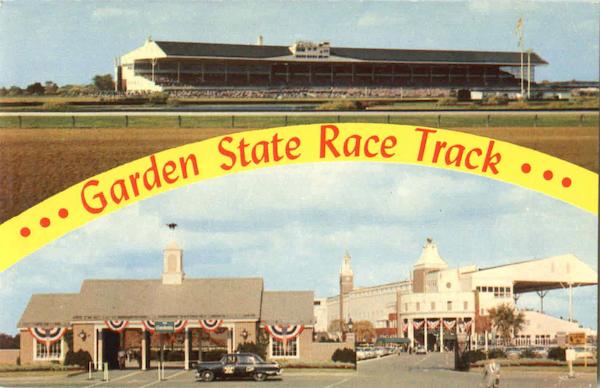







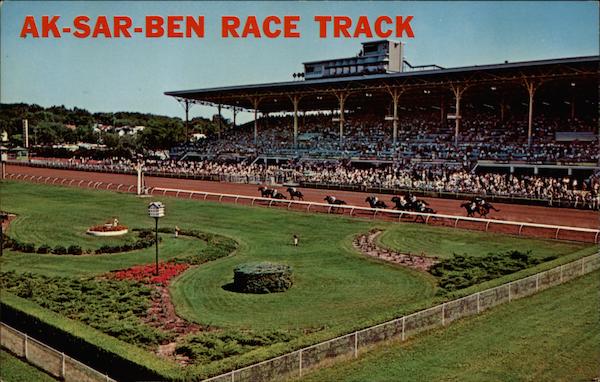
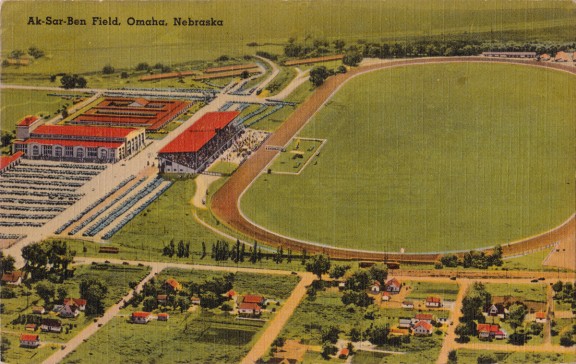




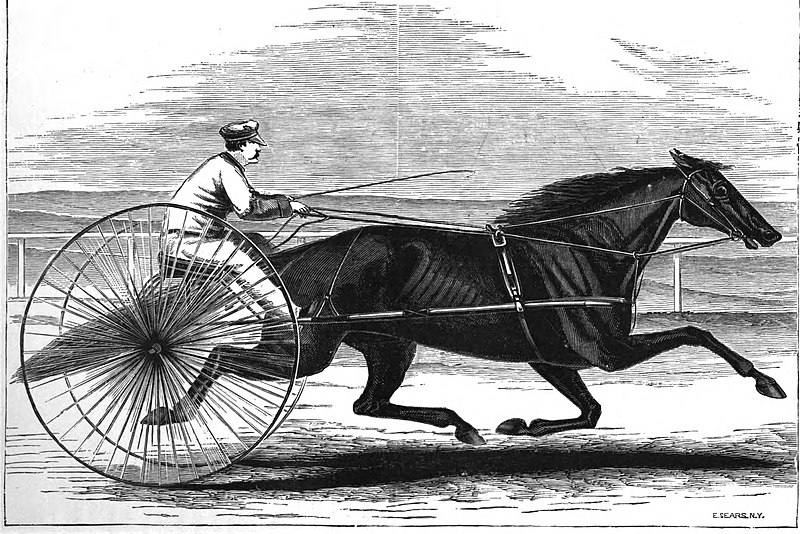
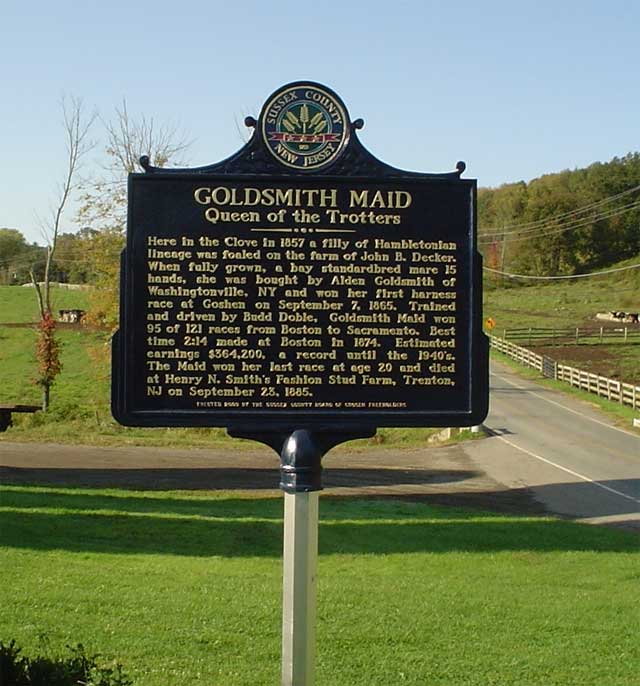








.JPG)


